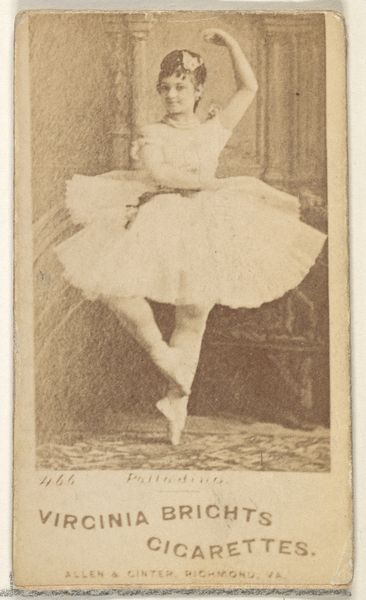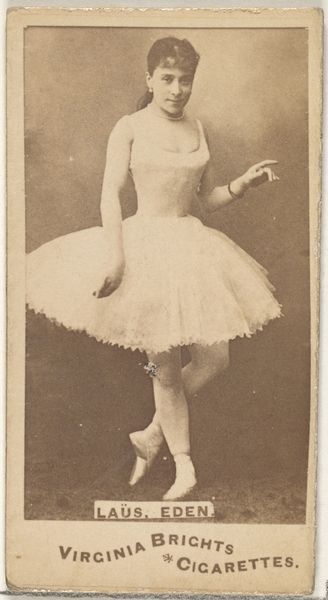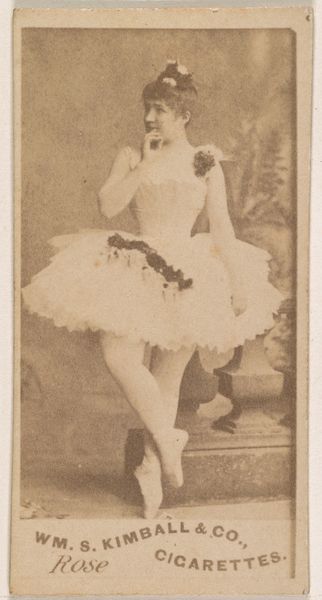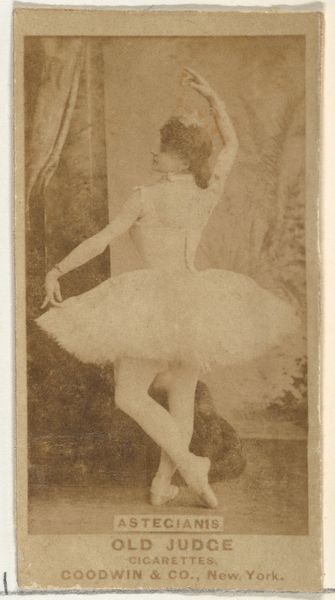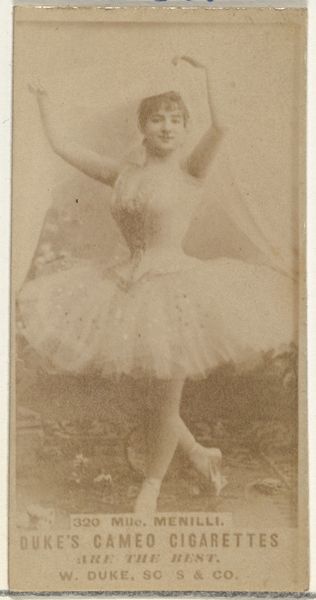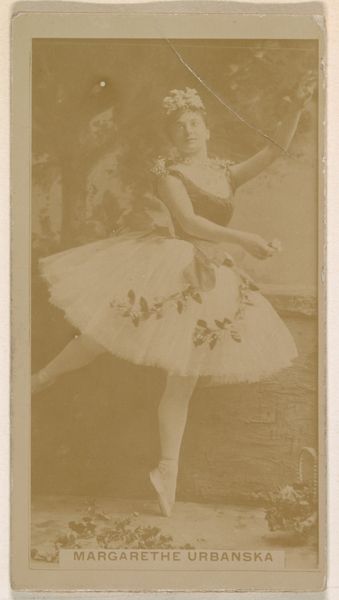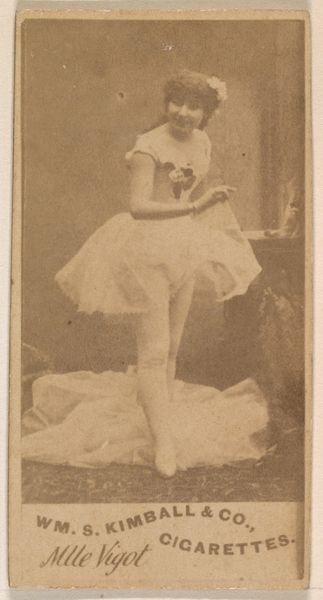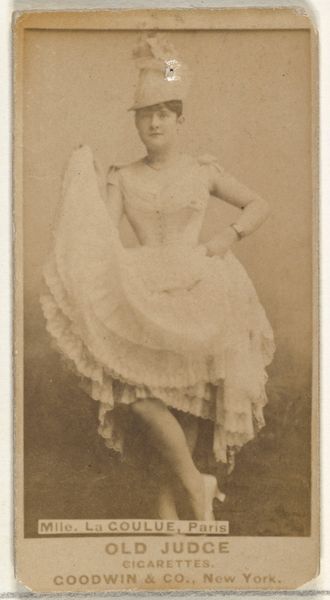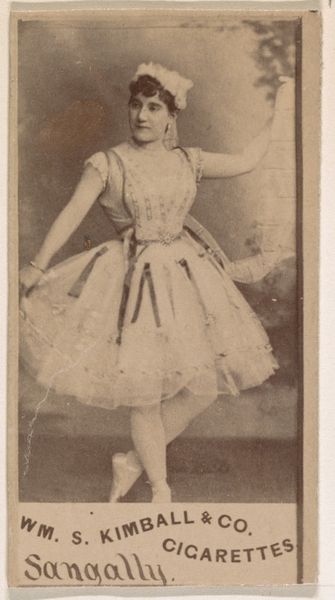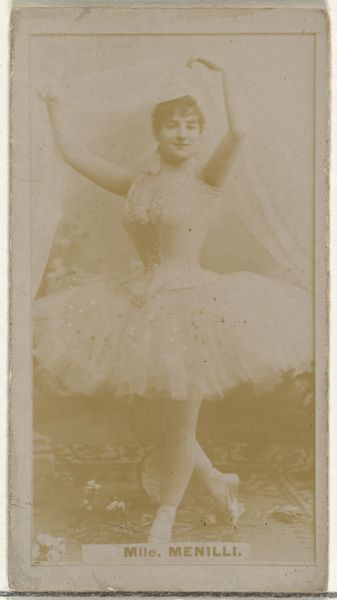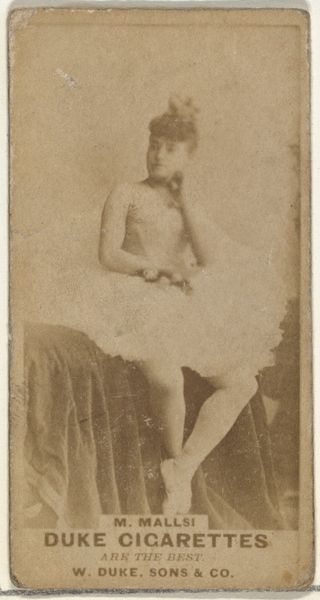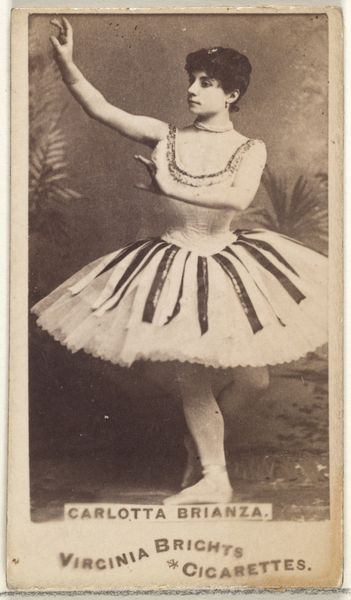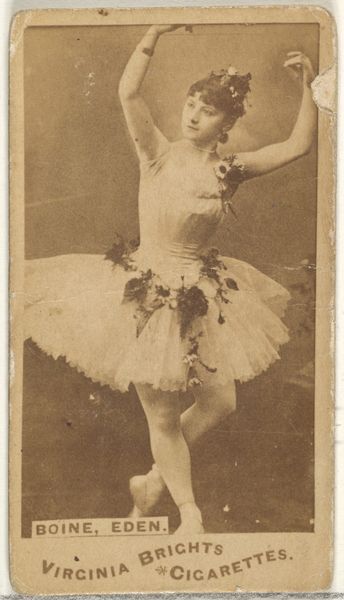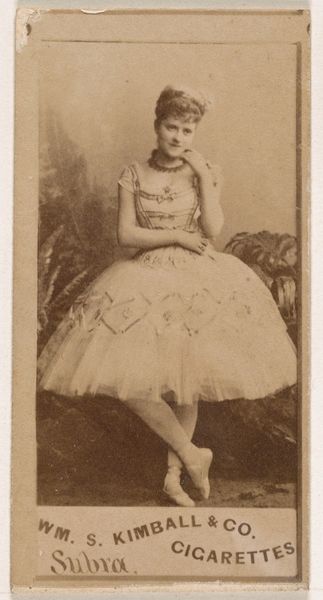
Anna Vislair, from the Actresses series (N245) issued by Kinney Brothers to promote Sweet Caporal Cigarettes 1890
0:00
0:00
print, photography
#
portrait
# print
#
figuration
#
photography
#
19th century
Dimensions: Sheet: 2 1/2 × 1 7/16 in. (6.4 × 3.7 cm)
Copyright: Public Domain
Curator: What a captivating piece of ephemera. This is a print dating back to 1890. It's titled "Anna Vislair, from the Actresses series (N245)" and it was issued by the Kinney Brothers to promote Sweet Caporal Cigarettes. Editor: My first thought is fragility and aspiration. The ballerina in her frothy tutu almost seems to float against that aged background, conveying both lightness and the relentless demands on women performers at the time. Curator: Absolutely. Consider the historical context. Actresses, and particularly dancers, occupied a precarious social position in the late 19th century. While admired for their talent and beauty, they also faced intense scrutiny and moral judgment. This image, circulated through tobacco products, speaks to that tension, commodifying femininity for a largely male consumer base. How does this connect to iconographic traditions in your view? Editor: It pulls from a familiar set of visual codes of idealized femininity. Think of Botticelli's Venus – the gentle curve of the body, the innocent gaze – but with the added layer of theatricality. The tutu becomes a symbol itself, embodying grace and artifice. And given its purpose as an advertising card, there is also something performative and deceptive happening beneath the surface of the seemingly naive and pure image. Curator: That deception also speaks volumes. The commercial exploitation of female performers echoes across history. These images normalize an accepted, though contested social hierarchy of that era, one in which gender roles were extremely restricted, but also highly scrutinized in public life. How much autonomy did women actually have over their image? Did they share in the profits? Who were these pictures for, and who was being erased? Editor: A poignant thought. It reminds me of how images create and reinforce societal norms, even – or perhaps especially – in fleeting forms like advertising cards. Each element – the gaze, the costume, the pose – contributes to an unspoken language, influencing perception. Curator: A lot to unpack for such a small artifact. Thinking critically about visual representation opens dialogue on intersectional aspects of labor, class, and the gaze back then. Editor: Agreed. There is something powerful in tracing how deeply imbedded the symbols around us really are and questioning the narratives of that era that we have internalized over generations. Thank you for your analysis!
Comments
No comments
Be the first to comment and join the conversation on the ultimate creative platform.
